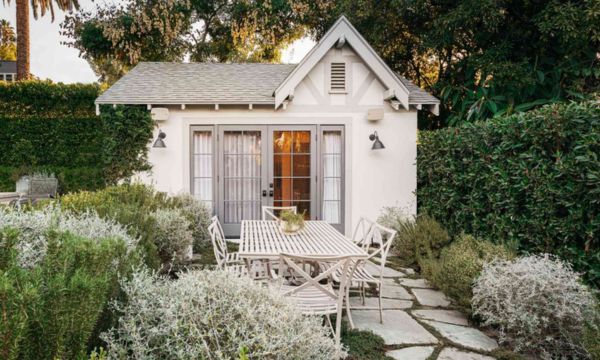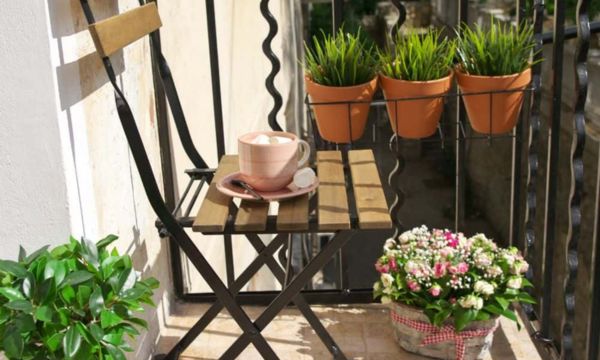Small Space, Big Harvest: The Joy of Tiny House Vegetable Gardening
You don’t have to give up the fun of growing your own veggies just because you’re moving to a smaller home. In fact, growing vegetables in a microgreenhouse is a very satisfying and comforting endeavor. You can turn the smallest space you have into a fertile garden supplying you with fresh and healthy produce with just a little ingenuity, careful planning and some creative thinking. In this article, we discuss the wonders of growing vegetables in a tiny house and the joys of living in tight spaces.
1. Choose a Lifestyle Suitable for Small Spaces
Living in a tiny house is all about simplifying your life and making the most of the available space. Vegetable gardening is an excellent way to put this idea into practice because it allows you to grow your own food in a sustainable and environmentally friendly way.
2. Choose the Right Type of Vegetables
When gardening in a limited area, choosing the right vegetables to grow is crucial. Choose varieties that are smaller or suitable for growing in containers. Here are some great options to consider:
Tomato: Choose dwarf or shrub varieties of tomato plants, as they grow well in pots and produce tasty tomatoes that can be used in salads and sauces.
Black Pepper: With a few small pepper plants you can give your dishes more flavour, ideal for gardens with limited space.
Spices: Your culinary masterpieces will benefit from adding an array of herbs such as basil, mint and thyme, which can be grown in hanging baskets or small pots.
Salad: Leafy greens like lettuce can be grown in shallow containers for a steady supply of freshly made salads.
3. The Method of Growing Vegetables in Vertical Space
Make the most of the vertical space in a compact home to grow a food garden. Climbing plants such as cucumbers and beans require the use of trellises, hanging baskets or wall-mounted pots. Growing plants vertically not only makes better use of the available space in a small garden, but also adds to the overall aesthetic.
4. Raised Bed to make Farming Easier
You may consider growing vegetables in raised beds. Raised beds improve soil drainage, reduce the chance of soil compaction and allow you to care for plants without bending over.
5. Use of Companion Plants
Companion planting techniques should be used to make the most efficient use of space and create a thriving environment. Planting vegetables that go well together, such as tomatoes and basil or carrots and onions, is an effective way to deter pests and promote healthy plant growth.
6. Close Plantings
When it comes to growing vegetables in a compact home, every square inch counts. If you grow vegetables close together using intensive farming methods, you can produce more food in the same space.
7. Watering Methods to Reduce Waste
Proper use of water is essential to growing a fruitful vegetable garden. To conserve water and ensure that your plants continue to receive sufficient water, you can place your plants in self-watering containers or install a drip irrigation system.
8. Grounds and Amendments
To provide vegetable plants with the nutrients they need, use good quality soil and organic fertilizers. A healthy soil environment not only promotes healthy plant growth, but also improves the taste of the food produced.
9. Plant Different Types of Crops at Different Times
You should rotate crops each season to prevent soil depletion and reduce the risk of disease and pest infestations. You should also practice planting continuously by sowing new seeds while harvesting old ones. This ensures that you have a steady supply of vegetables throughout the growing season.
10. The Pleasure of Picking Your Own Vegetables
For those of you who garden in your own tiny home, the thrill of harvesting your own delicious and fresh produce is the ultimate reward. Growing your own food, from seed to finished product on your table, gives you a sense of accomplishment and pride.
Conclusion:
Growing vegetables in a tiny house can be a fun adventure that brings the satisfaction of self-sufficiency and the beauty of nature to your more compact living space. Embrace your inner gardener and learn to appreciate the splendor that breathes new life into the world outside your front door. Your little garden will bring a lot of fun and fulfillment to the lifestyle you live in your tiny house, whether it’s a few aromatic plants or a variety of colorful vegetables.
FAQs:
1. Can I grow vegetables in a tiny house?
Yes, many vegetables can be grown indoors in full sun or with LED grow lights. Consider growing herbs, lettuce, and compact tomato and pepper varieties indoors.
2. How much sunlight do vegetables need to grow?
Most vegetables require at least 6 hours of direct sunlight per day for optimal growth and productivity. Make sure your small garden has plenty of sun exposure.
3. Can compost be used in a small garden?
Yes, it is possible to make compost in a small garden using a small compost bin or worm breeding system (worm composting). Compost enriches the soil and reduces waste.
4. Can I grow vegetables all year round in a small garden?
Depending on your climate, you can use cold frames, row covers, or a mini greenhouse to extend the growing season and enjoy fresh produce year-round.
5. Which vegetables grow well in partial shade?
Yes, some vegetables, such as lettuce, spinach and kale, can tolerate partial shade and are perfect for small gardens with little sun.
Ad Nowadays our smartphones have become a powerful tool, unlike in the past when they were very […]
More Thriving in Adversity: Tiny House Gardening in Challenging Climates
Thriving in Adversity: Tiny House Gardening in Challenging Climates
Ad Creating life and beauty through tiny home gardening, even in the harshest environments, is a monument […]
More Making the Most of Sunlight: Tips for Sun-loving Plants in Tiny Gardens
Making the Most of Sunlight: Tips for Sun-loving Plants in Tiny Gardens
Ad If you only have a little garden space, that doesn’t mean you have to limit the […]
More